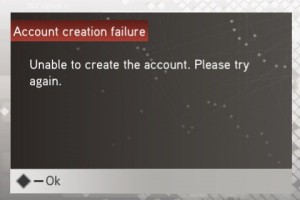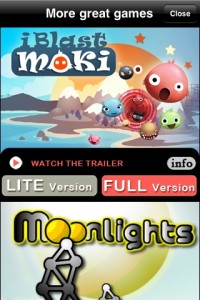A couple weeks back we wrote an article about the A.D.D levels that iPhone users have. It came on the back of some reports that users had a tendency to last a little over a week with an application. Since then I’ve thought quite a bit about the things app developers have to deal with in today’s application market and the things they have to do to over come them. It’s by no means all encompassing, but there’s three things that developers can do to ensure that their games are continuing to be played.
 Make sure your game works on release day
Make sure your game works on release day
The Assassins Creed II Multiplayer edition sure got a lot of buzz on release day. Every single blog on the planet was talking about it, but what no one mentioned was that they were facing some serious problems–downtime. A quick look at the comment revealed that people were stuck on loading screens, couldn’t sign up for an account, and were constantly getting disconnected. The attention span of iPhone users is far too short to put up with that kind of crap. You get one shot, and if your game doesn’t load or play like a user expects it’s doubtful they’ll relaunch your app. Gamers haven’t invested a large chunk of their weekly salary to play your game, so the investment is minimal. That lack of investment transcends the financial burden and encompasses the emotional investment. Users can become invested in your game if it doesn’t work, and no one’s going to stick around for version 2.0 of your app.
If you want to make sure your game is a success invest the time to get the bugs out of the game to begin with. Meeting corporate deadlines isn’t a good enough excuse for a launch. Test, test, test, and then test again when you don’t think you can test any more. Give yourself the best chance to stick around by ensuring that your game gets passed the splash screen on first launch.
It sounds pretty straight forward and a whole lot of captain obvious, but you’d be surprised how many app reviews I do where this isn’t the case.
Make sure your game is dynamic enough to keep your users entertained
Fart apps, tip apps, and other do-one-thing applications might be good enough to stand on their own as an application, but a game that doesn’t deliver the goods gets axed from my phone pretty quickly. My internal conversation goes like this, “Hey this game looks pretty cool”, “Oh, it’s not that hard”, “Really 5 *expletive that rhymes with ducking* levels?”. To be fair I go through a lot of applications so my penchant ability to see crapware is amazing. Go above and beyond the expectations and you’ll be rewarded. Rush to push the game out the door and you’ll probably regret it. Finish your game, but then take a step back for a while, think about what it does that can be done a little bit better. Think about what you can do with it that no one has done before, think about what you could do that would be completely unexpected, then implement it. Only once you’ve done that should you release your game.
 Don’t provide new levels without ever telling the user on first launch.
Don’t provide new levels without ever telling the user on first launch.
If there’s one thing that can be learned about user behaviour from computers, it’s that updates rarely happen. People with a vested interest might update, as will the geeky crowd, but for the most part people won’t update. Heck, most might not even know that they have to update. Relying on updates to fix your application is a bad idea in general, and providing new game play in an update might go unnoticed by those who had lukewarm feelings toward your game. I can’t even begin to count the number of times that I’ve updated all the apps on my phone, but never really spend time trying to find out which app or game has added features, and I have a vested interest in knowing. If you’re hoping the new level you’ve introduced won’t go unnoticed you might be wrong. The only times I’ve checked back for an upgrade or new “chapter” to a game is when the developer makes it painfully clear that more stuff is coming, or that more content is unlockable and will be provided in the near future.
Plan ahead. If you think you might be adding a second installment to your game, or you think that additional levels may be in the pipeline at some point, let your customers know in advance, and preferably, let them know within the game. You get one shot at hooking them on your franchise, and knowing that additional levels are coming is a strong incentive for them to stick around and check out future installments of your games.
I have plenty of opportunities to try a game out for 10 minutes, but I have very little time to dedicate to playing a game for a long time. If I don’t love your game, and I can’t figure out everything about it that I need to know with in ten minutes, I’ll probably move on to something else that I like more. Don’t make your players think about how to play your game. Show them quick, and let them jump right in.
Time’s a ticking, and hopefully you can convert some clients in that time.






